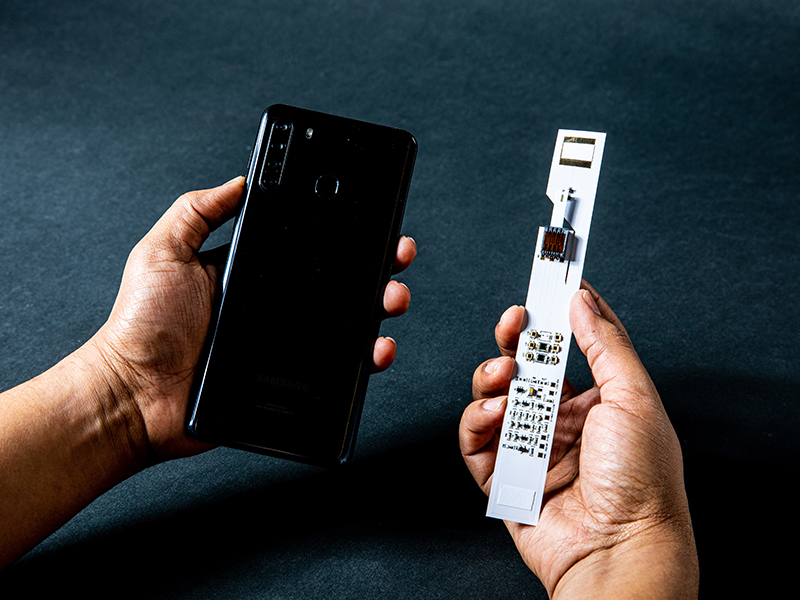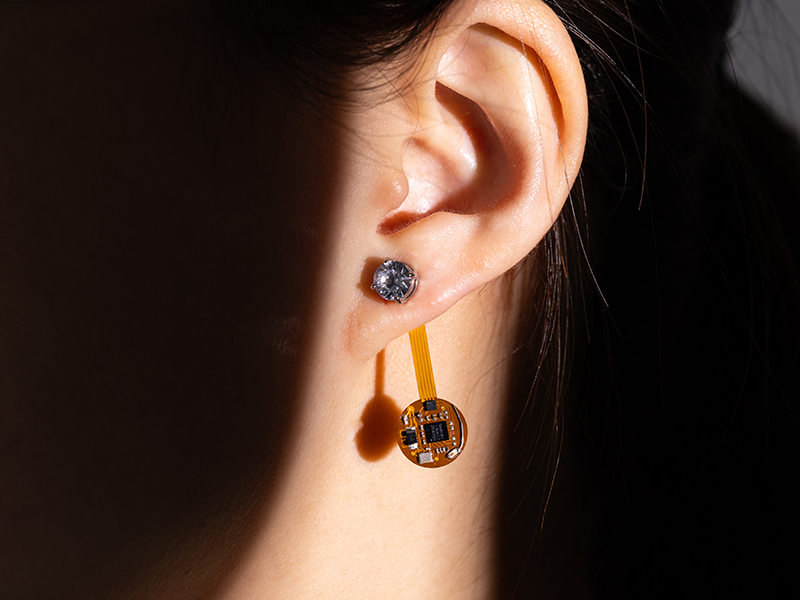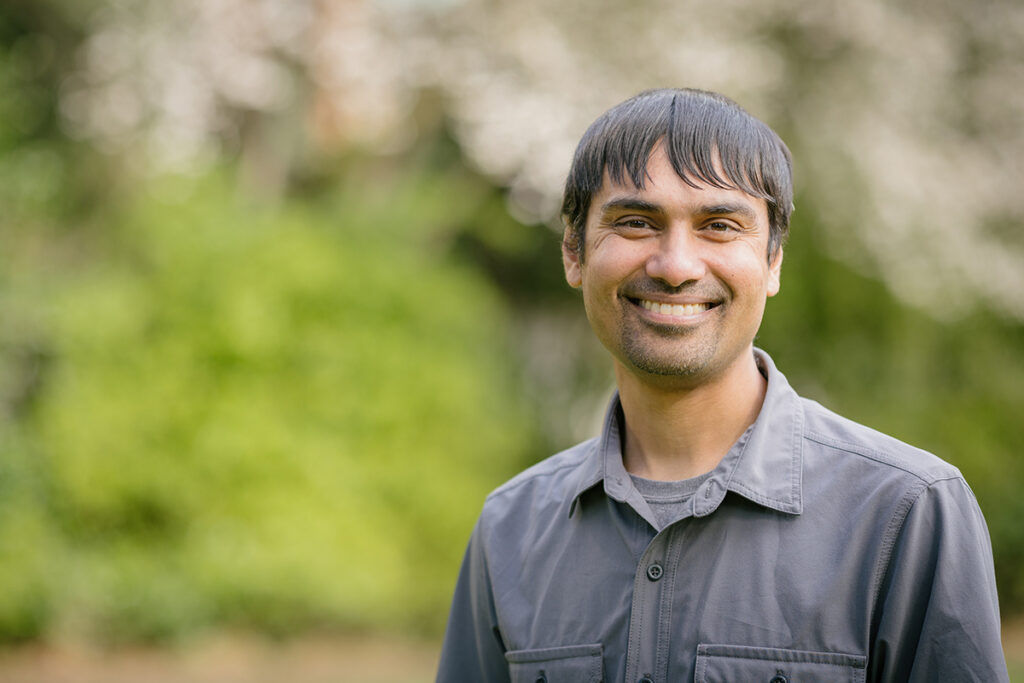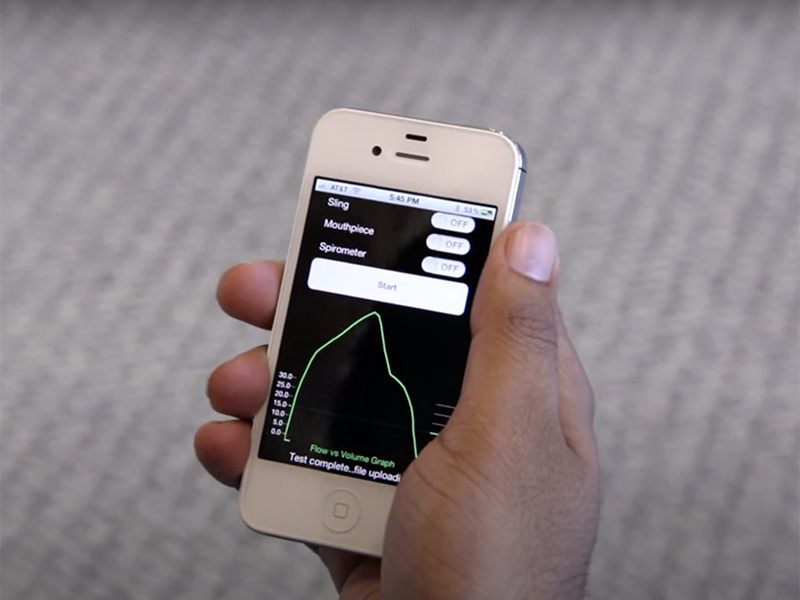When it comes to the field of human-computer interaction, University of Washington professor Shwetak Patel aims, in his own words, “to think outside the box and challenge existing assumptions.” Patel, who holds the Washington Research Foundation Entrepreneurship Endowed Professorship in the Allen School and the UW Department of Electrical & Computer Engineering, has repeatedly put that philosophy into practice, inventing entirely new areas of research — and even new industries — in the process. Last week, the Association for Computing Machinery’s Special Interest Group on Computer Human Interaction inducted Patel into the SIGCHI Academy in honor of his trailblazing contributions in health, sustainability and interaction research.
Patel joined the UW faculty in 2008, when he established the Ubicomp Lab to explore novel sensing and interaction technologies. In parallel with his work on projects such as smart paper and on-body sensing using ultrasound, Patel began playing with his phone. But rather than obsessing over Candy Crush or Sudoku, he fixated on the potential to repurpose this nearly ubiquitous device that combined sensing, data processing and communication to expand access to health care — particularly for people in low-resource settings.
The lab’s release of SpiroSmart, the first mobile app for measuring lung function by having a patient exhale into the phone’s microphone, proved to be a game changer.
“Instead of having to travel to a clinic with a spirometry device, people with chronic lung disease could use SpiroSmart to measure their lung function in their own home,” Patel said. “We showed how these inexpensive built-in sensors could be used to augment patient care by supporting routine screening and monitoring.”
As the sensors in phones got more sophisticated, so, too, did the ways in which Patel sought to use them. Case in point: the camera, which Patel and his collaborators used to prototype new screening methods for infant jaundice, anemia, adult jaundice — an early indicator of pancreatic cancer — and brain injury, along with measuring vital signs such as heart and respiration rate via video. With these and other projects, Patel and his colleagues helped to establish the new field of mobile health sensing. They formed a startup, Senosis, to commercialize this work that was subsequently acquired by Google. He now divides his time between that company, where he is a Distinguished Scientist and Head of Health Technologies, and UW, where he serves as the Allen School’s Associate Director for Development & Entrepreneurship.

That body of work only scratched the surface of what smartphones can do when it comes to monitoring and managing our health. Last year, Patel and his collaborators touched on a new way to use the capacitive sensing capabilities of the phone’s screen to measure blood glucose. Using a modified version of widely available test strips that incorporates an inexpensive biosensor and draws power from the flash, they created a tool called GlucoScreen that communicates test data via simulated taps on the phone’s screen. The app then processes the results right on the phone, producing a blood glucose reading with an accuracy comparable to commercial glucometers.
Their proof of concept showed promise for mass screening for prediabetes — and potentially much more.
“Now that we’ve shown we can build electrochemical assays that can work with a smartphone instead of a dedicated reader, you can imagine extending this approach to expand screening for other conditions,” Patel remarked at the time.
Capacitive sensing came in handy for another recent project, FeverPhone, that used a combination of the touchscreen and the thermistors, typically used to monitor battery temperature, to instead measure a person’s body temperature. Patel and his team subsequently put the phone down in favor of another popular accessory that could do double duty as a temperature sensor: the Thermal Earring. More than a fashion statement, this piece of wearable and rechargeable bling can measure changes in earlobe temperature throughout the day, rather than reporting a daily average like other wearables, with potential applications for monitoring fever, stress, ovulation and more.
While Patel enjoys the technical challenge of expanding how and what sensors can measure, it’s the human side of research that he finds most compelling — and most rewarding.

“HCI research has always been critical to our work in health in terms of really understanding user needs,” said Patel. “It’s how we ensure what we are building has the best chance for the biggest impact across the world.”
But Patel is keen to ensure that impact does not come at the expense of the environment by making sensors themselves more sustainable. For example, he recently contributed to the development of a printed circuit board made of a type of polymer called vitrimer that can be repeatedly recycled. Both the polymer and the electronic components in vPCBs can be reused without degrading their performance, thus reducing a significant source of e-waste.
The project is the latest in a long line of research supporting sustainability that Patel has pursued during his career. Other contributions include a method for measuring residential power and water usage at the device or fixture level using a single sensor and an ultra-low power, whole-home sensing system to monitor for potential hazards.
Patel is joined in this year’s class of SIGCHI Academy inductees by Allen School adjunct faculty member Julie Kientz, professor and chair of the UW Human Centered Design & Engineering Department, who was honored for work to advance interaction technologies that support child development, accessibility, education and health. Another HCDE faculty member and Allen School adjunct, Kate Starbird, received the SIGCHI Societal Impact Award for her research into the use of communications technologies during crisis events and techniques for addressing the spread of misinformation and disinformation online.
Former Allen School professor James Landay, now a faculty member at Stanford University and associate director of Stanford’s Institute for Human-centered Artificial Intelligence (HAI), earned a Lifetime Research Award for his contributions to mobile and ubiquitous computing, technologies for supporting education and behavior change, user interface design and more.
Patel and his fellow SIGCHI honorees were recognized at the Conference on Human Factors in Computing Systems (CHI 2024) in Honolulu, Hawai’i. Learn more about the honorees in the SIGCHI announcement here and a related HCDE story here.



